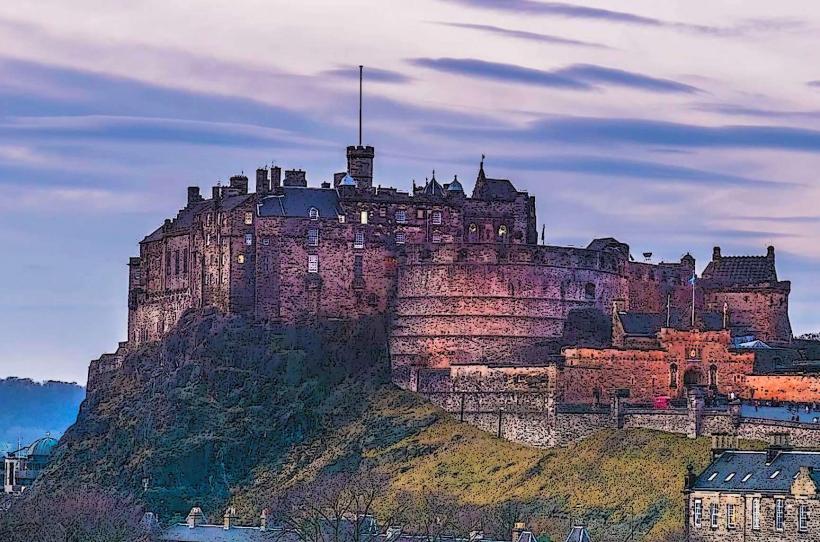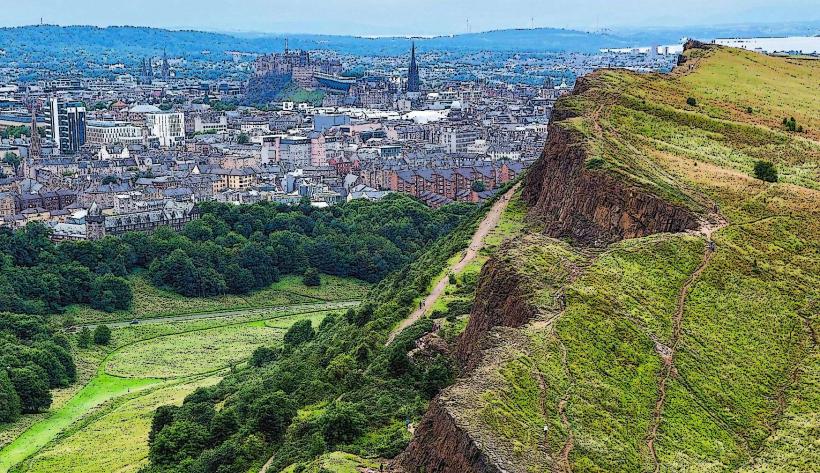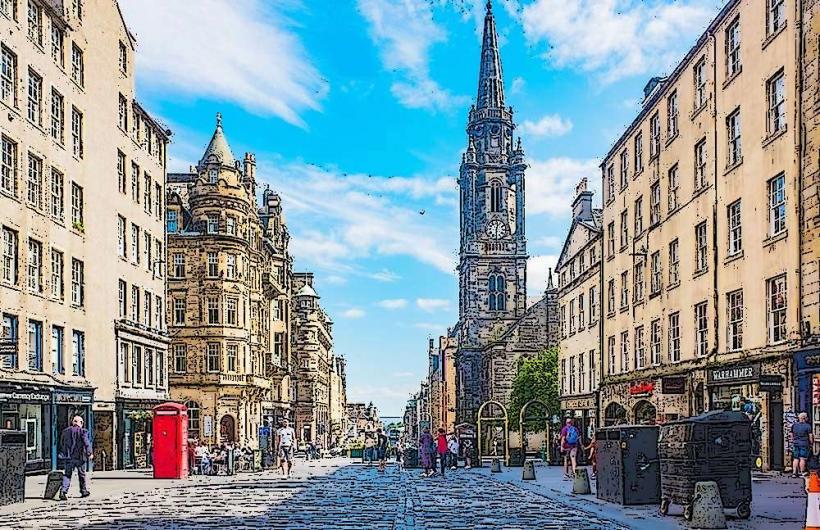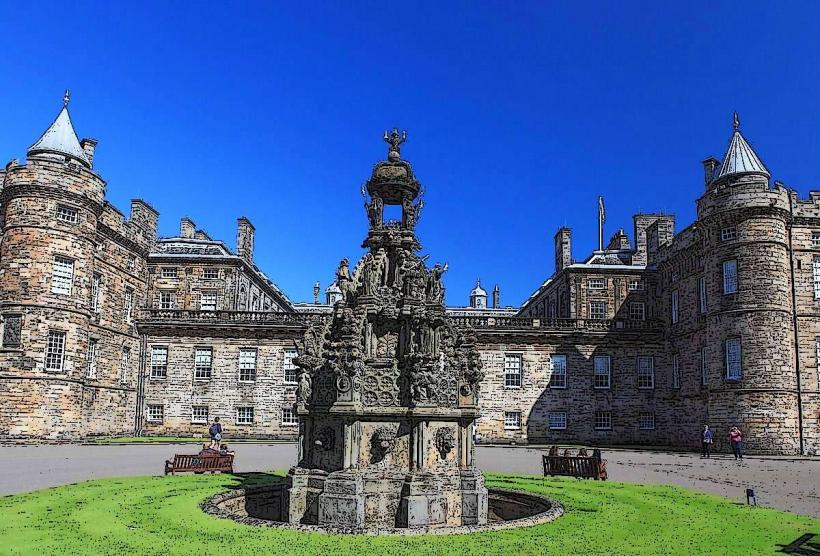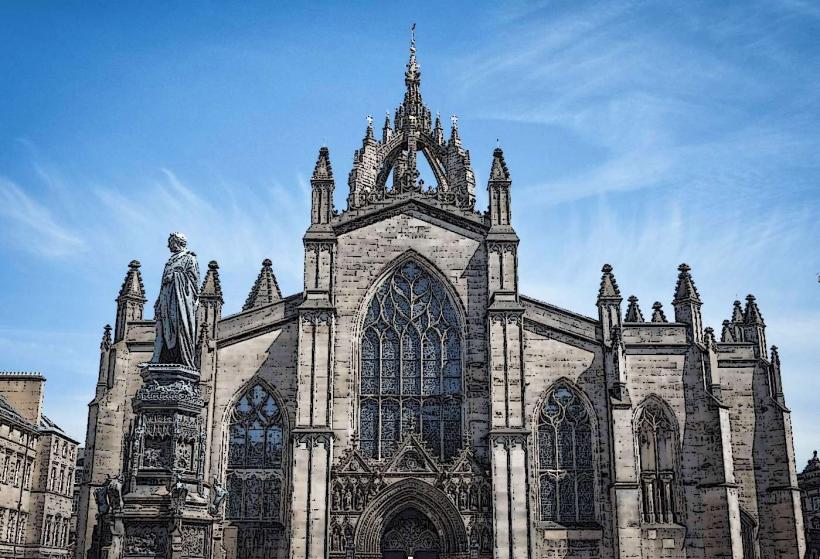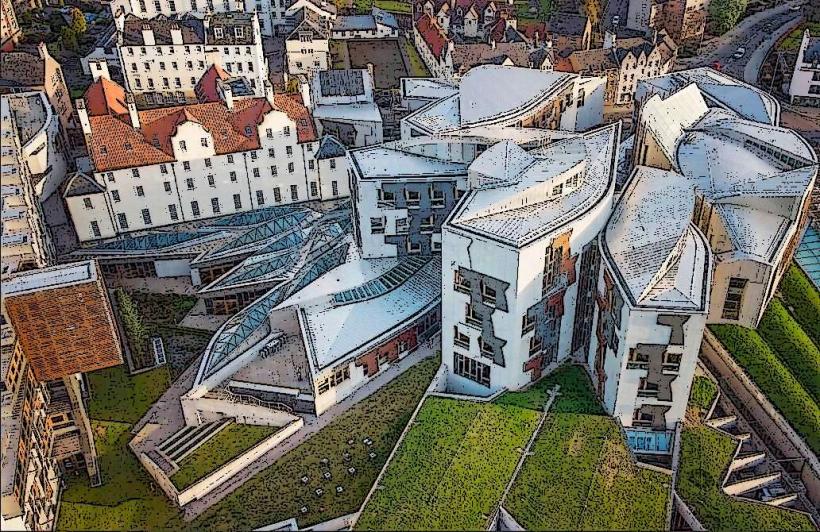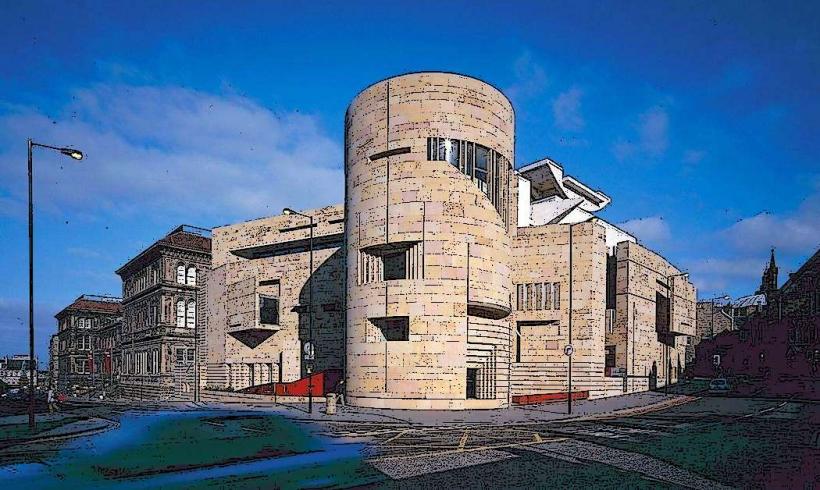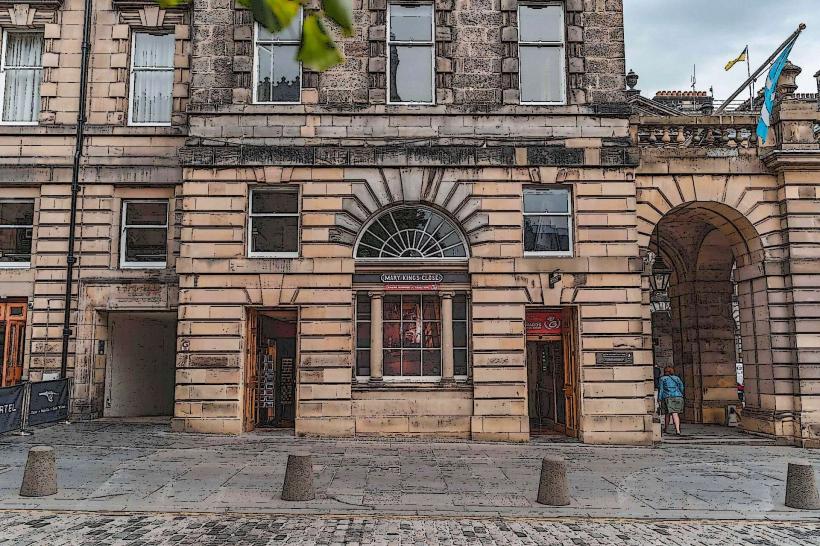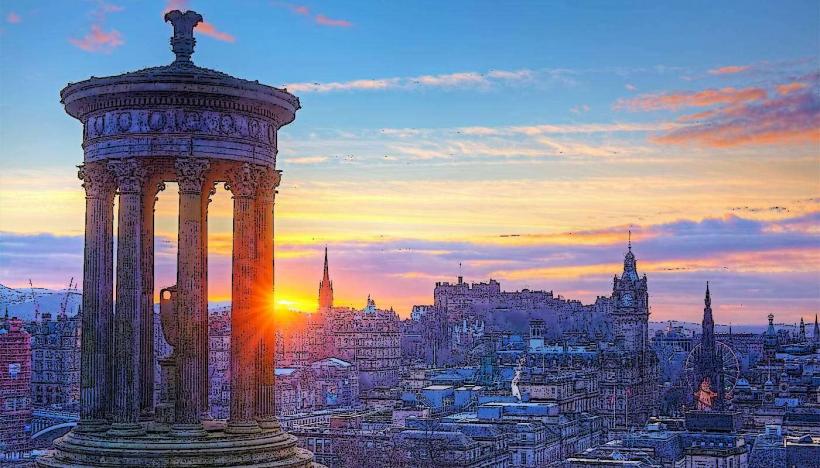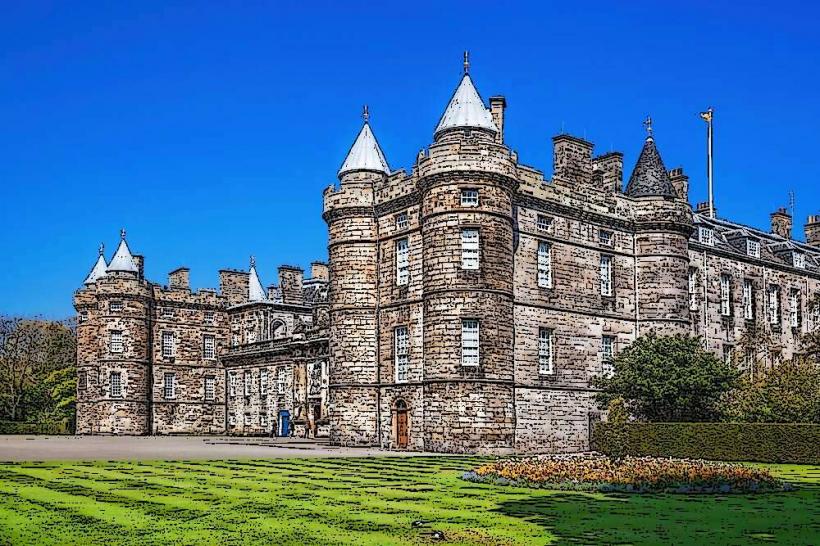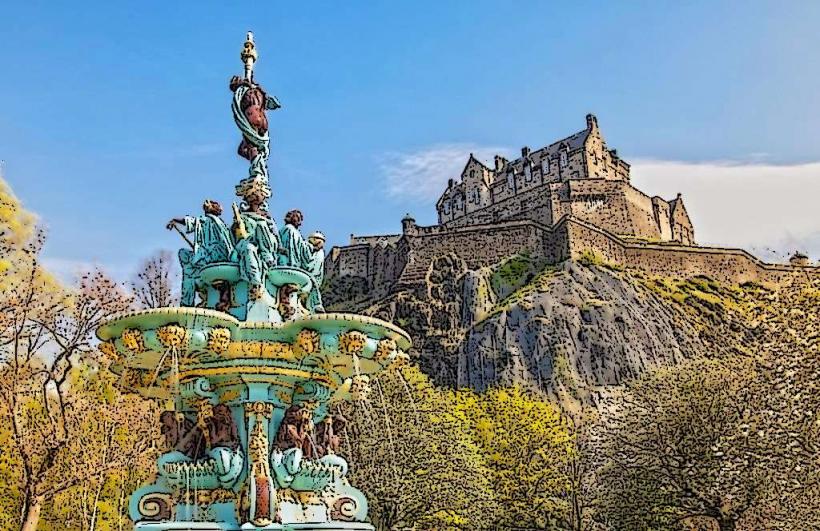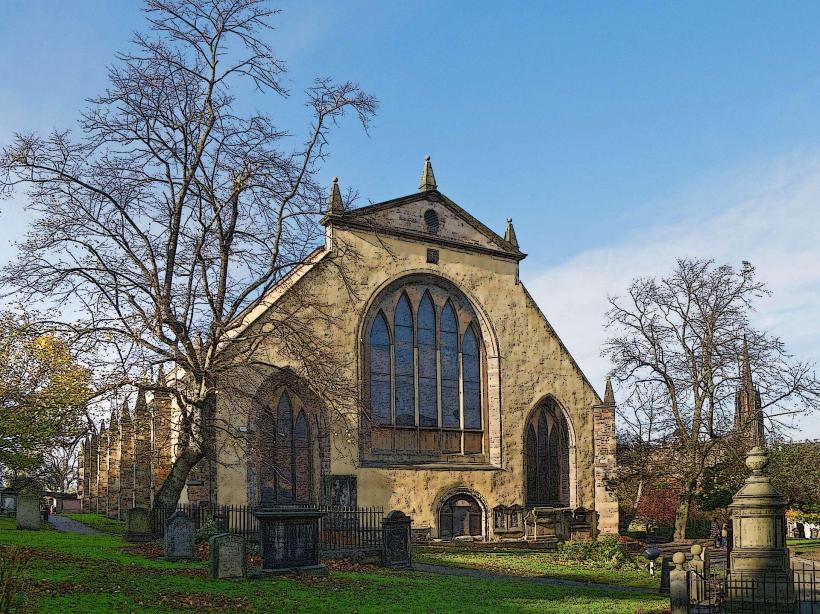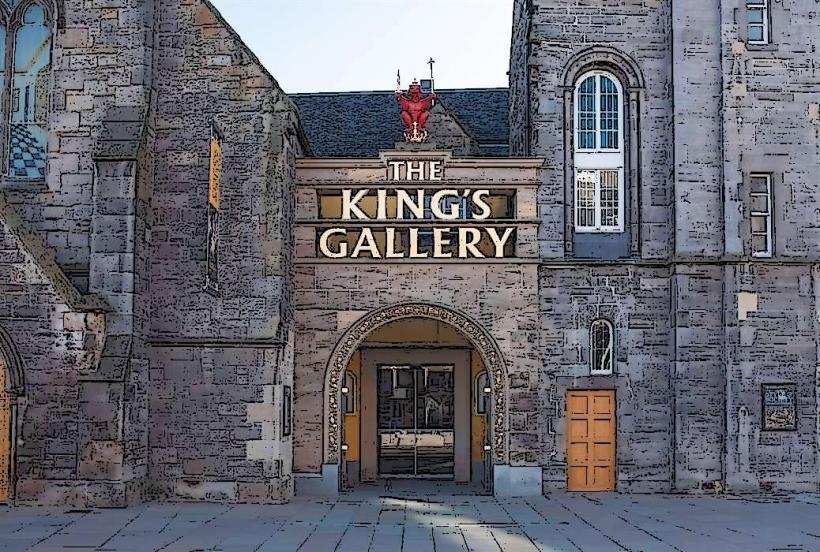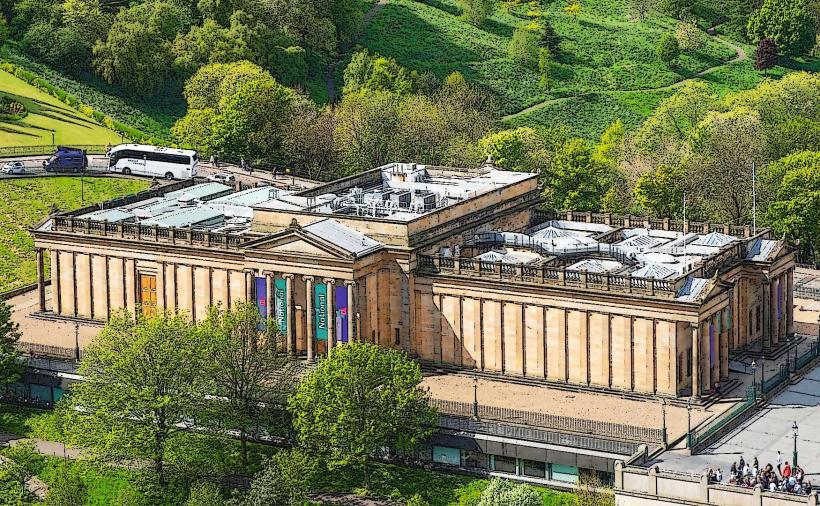Information
Landmark: Scottish National Portrait GalleryCity: Edinburgh
Country: United Kingdom
Continent: Europe
The Scottish National Portrait Gallery in Edinburgh is one of Scotland's most distinctive cultural landmarks, offering a unique exploration of the country’s history through portraiture. Located on the city’s Queen Street, the gallery is dedicated to showcasing portraits of significant Scots—spanning from the medieval period to contemporary figures—allowing visitors to engage with Scotland’s rich cultural heritage. Here’s a detailed overview of the gallery’s history, collections, architecture, and visitor experience.
History and Foundation
Origins and Founding:
- The Scottish National Portrait Gallery was officially founded in 1882. The gallery was conceived as a national collection of portraits to celebrate Scotland's most influential figures, from kings and queens to philosophers, poets, scientists, and artists. The idea was to create a collection that would both commemorate these individuals and help establish their place in Scotland's national identity.
- The Scottish National Portrait Gallery is part of the broader National Galleries of Scotland, which also includes the Scottish National Gallery (housing a collection of fine art) and the Scottish National Gallery of Modern Art. These institutions share resources and work together to provide a comprehensive overview of Scottish visual culture.
The Role of Sir George Reid:
- The gallery’s founding was greatly influenced by the efforts of Sir George Reid, a prominent Scottish portrait artist, who was instrumental in gathering the portraits of significant historical figures. Reid believed that portraits were not only works of art but also a crucial part of preserving the collective memory of the nation’s heritage.
Growth of the Collection:
- Over the years, the gallery’s collection expanded through a series of acquisitions, donations, and bequests. Key figures in Scottish history, including Mary, Queen of Scots, Robert Burns, Sir Walter Scott, and Charles Rennie Mackintosh, are represented in the gallery’s collection, with new additions from modern and contemporary artists further enriching the narrative.
- The gallery’s collection reflects Scotland’s diverse history, from the medieval period through to the 21st century, encompassing not only the famous and powerful figures of the past but also lesser-known individuals who contributed to the nation’s cultural and intellectual development.
Architecture
Design and Construction:
- The Scottish National Portrait Gallery is housed in a striking neo-Gothic building designed by the architect William Playfair, who also designed the Scottish National Gallery. The building was constructed between 1885 and 1890, and its architectural design is a key feature of the gallery’s identity.
- The gallery’s exterior is marked by intricate stonework, pointed arches, and a grand façade that evokes the architectural style of medieval castles and cathedrals. The building’s central feature is the tower, which rises high above the city, creating a visual landmark in Edinburgh’s cityscape.
- Inside, the galleries are spacious and designed to allow natural light to flood the interior, with high ceilings, vaulted arches, and elaborate detailing. The building’s interior has been carefully restored over the years to preserve its historic charm while adapting it for modern museum use.
Recent Renovations:
- The Scottish National Portrait Gallery underwent a major renovation between 2008 and 2011, which sought to modernize the gallery while retaining its historical character. The renovation aimed to improve accessibility, enhance the visitor experience, and update the gallery’s facilities for the 21st century.
- The renovations included the creation of new galleries, the reorganization of the collection, and the installation of modern lighting and temperature control systems to preserve the artworks. A new visitor café and shop were also added, creating a welcoming space for visitors.
Collections
Portraits of Scottish Figures:
- The gallery’s collection spans over 500 years of Scottish history and features portraits of key figures from politics, literature, science, and the arts. The portraits are primarily paintings but also include photographs, sculptures, and prints.
- Early Portraits: The collection includes portraits of figures from medieval Scotland, such as King James V and Mary, Queen of Scots, as well as leaders from the Scottish Reformation and the Jacobite risings. These early portraits help to capture the tumultuous political history of Scotland during the Renaissance and Early Modern periods.
19th-Century and Victorian Portraiture:
- The gallery is particularly strong in its collection of 19th-century portraits, including images of famous literary figures like Sir Walter Scott, Robert Burns, and Thomas Carlyle, alongside portraits of influential political leaders and industrialists from the era. The works often reflect the Victorian style of portraiture, with its attention to detail, formality, and romanticized representations of historical figures.
- Notable 19th-century works include portraits by celebrated Scottish artists like Sir John Watson Gordon and Allan Ramsay.
Scottish Enlightenment and Intellectuals:
- A significant portion of the gallery focuses on the Scottish Enlightenment (18th century), a period of intellectual and cultural flourishing in Scotland. Portraits of prominent figures from this era, such as David Hume, Adam Smith, and James Watt, are featured in the collection, providing insight into Scotland’s role in the development of modern philosophy, economics, and science.
Modern and Contemporary Portraits:
- The gallery’s collection continues to grow, with increasing representation of modern and contemporary figures. Notable portraits include those of political leaders such as John Major and Nicola Sturgeon, as well as prominent cultural figures like artist Douglas Gordon and writer Alexander McCall Smith.
- The gallery also includes contemporary portrait photography, with notable works by Annie Leibovitz and Martin Parr, as well as emerging Scottish artists. The collection showcases the evolution of portraiture techniques and the changing representation of Scottish identity in the 20th and 21st centuries.
Portraits by Renowned Artists:
- The collection contains portraits by some of Scotland’s most famous artists, such as Henry Raeburn, Allan Ramsay, and James Whistler, as well as works by internationally renowned artists like Francis Bacon, David Hockney, and Lucian Freud. These works reflect the changing styles and approaches to portraiture, from traditional, formal depictions to modern, psychological interpretations.
Exhibitions and Programs
Permanent and Temporary Exhibitions:
- The Scottish National Portrait Gallery hosts both permanent exhibitions, which highlight key works from the collection, and temporary exhibitions that focus on specific themes, artists, or periods in Scottish history. Temporary exhibitions often involve collaboration with other galleries and museums and can feature both historical and contemporary portraiture.
- Recent exhibitions have included retrospectives of artists like John Bellany and Robert Mapplethorpe, as well as thematic shows focusing on the representation of women in Scottish art or the role of portraiture in the construction of national identity.
Educational Programs:
- The gallery offers a range of educational programs designed to engage visitors with the artworks and the broader themes of the collection. These programs include guided tours, workshops, and lectures on topics such as Scottish history, art history, and the techniques used in portrait painting and photography.
- The gallery also organizes family-friendly activities, making it a great destination for visitors of all ages. These activities often involve creative workshops or interactive experiences designed to help children and families explore art in a fun and engaging way.
Special Events:
- In addition to exhibitions and educational programs, the gallery hosts special events throughout the year, including lectures, film screenings, and live performances. These events often complement the gallery’s exhibitions and provide a more in-depth look at Scottish culture, history, and the world of portraiture.
Visitor Experience
Admission:
- Admission to the Scottish National Portrait Gallery is free for the permanent collections, though temporary exhibitions may require a paid ticket. This makes the gallery one of the most accessible cultural institutions in Edinburgh. The gallery is open throughout the year, with extended hours during peak tourist seasons.
Location and Accessibility:
- Located in the heart of Edinburgh, the gallery is easily accessible from key attractions such as Edinburgh Castle, the Royal Mile, and Princes Street Gardens. The gallery is well-served by public transport, including buses and trams, and is within walking distance of major hotels, restaurants, and other cultural sites in the city.
- The gallery is fully accessible to people with disabilities, with lifts, ramps, and audio guides available for visitors with mobility challenges.
Café and Gift Shop:
- The Scottish National Portrait Gallery has a café where visitors can relax and enjoy a variety of refreshments, including sandwiches, cakes, and hot drinks. The café is a popular spot for both visitors and locals.
- The gallery’s gift shop offers a range of art books, prints, souvenirs, and unique gifts inspired by the artworks on display.
Conclusion
The Scottish National Portrait Gallery is a unique and essential institution for anyone interested in Scotland’s history, culture, and art. Its extensive collection of portraits, spanning centuries of Scottish history, offers an invaluable insight into the people who shaped the nation’s identity and development. Whether exploring the portraits of Scotland’s monarchs, intellectuals, artists, or modern-day icons, visitors to the gallery are treated to a fascinating visual history of the country. The gallery’s impressive architecture, educational programs, and dynamic exhibitions make it a must-visit for anyone in Edinburgh.

